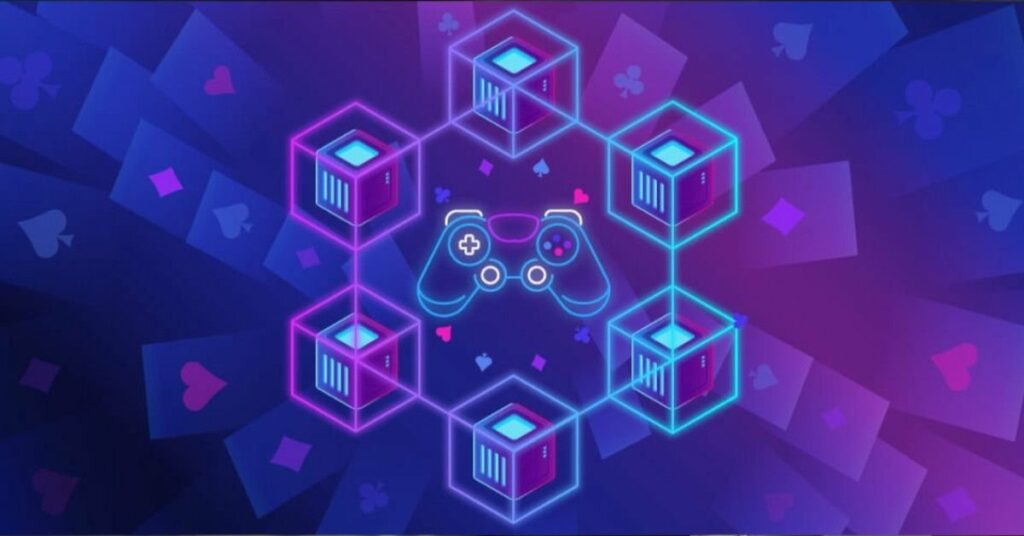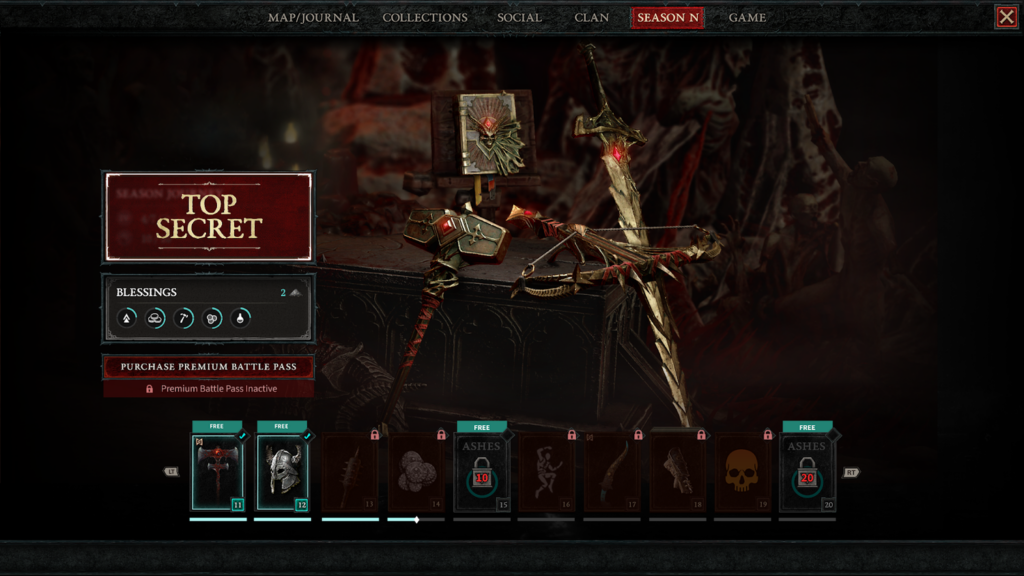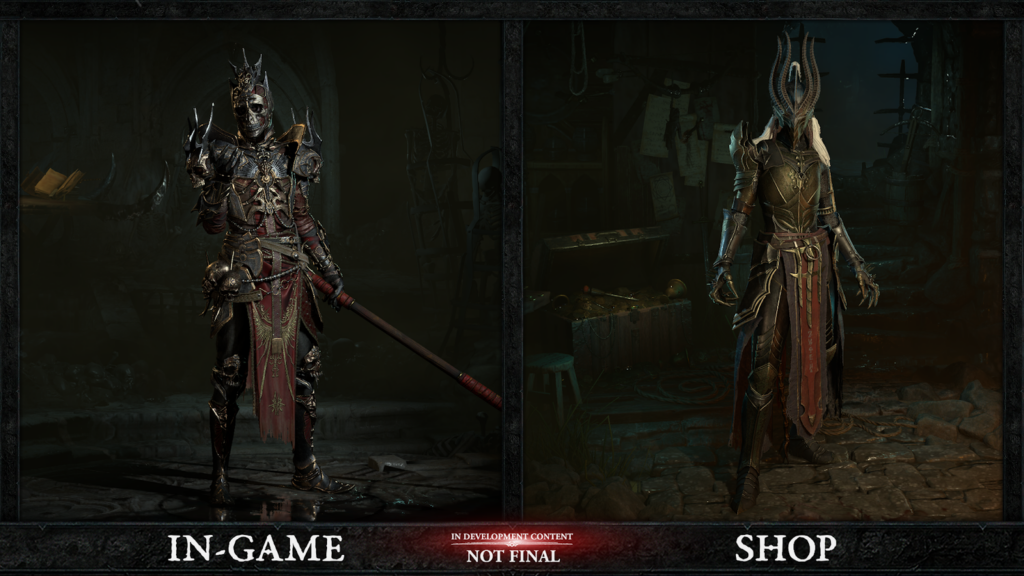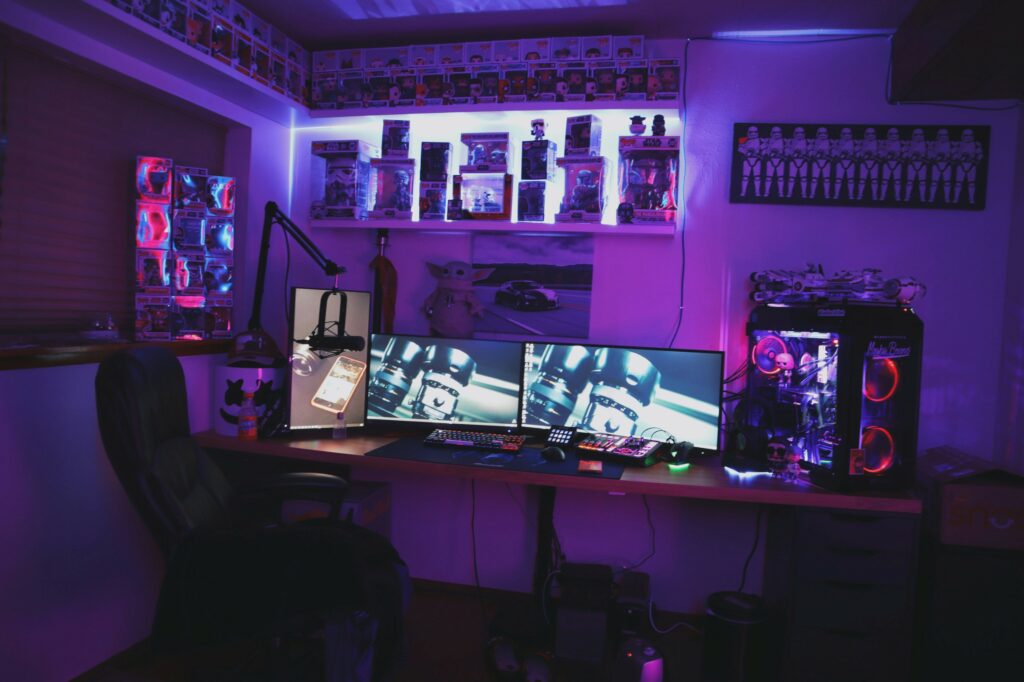Hi everyone. Big news! Naavik is nearing the launch of what we're calling the Open Gaming Research Initiative (OGRI). High-quality, open, and collaborative research is core to our DNA, and we're about to take it to the next level. Here's what you need to know:
- Expect more great content. The OGRI will include all of the same great free content you've come to expect from us, but we will also be greatly expanding our output with monthly game deconstructions, genre reports, topical deep dives, new podcast content, and more. In fact, we recently closed our Naavik Pro paywall and are porting over many of its amazing writers and the Pro content pipeline to the free side.
- Naavik Digest is leveling up. Starting next week, Naavik Digest will publish on Sunday, Monday, Tuesday, and Thursday. Wait, four issues per week? Yep! We're streamlining each issue but aim to bring you even more high-quality coverage.
- This initiative is collaborative. We're able to scale up great open research due to our amazing community of creators as well as our soon-to-be-announced partners. In fact, if you're interested in contributing or becoming a partner, don't hesitate to reach out by replying to this email. We still have a couple of openings.
More details will be shared in the coming days. For now, though, we're super grateful to all of you for being on this journey with us. Here's to many more years of learning together!
Now onto today’s issue. If you missed our last one, be sure to check out our analysis of Apple’s new Vision Pro headset and what it could mean for XR gaming. In this issue, we have a Naavik exclusive web3 monthly gaming market update, as well as a dive into the early success of Blizzard’s Diablo IV and how the ARPG series is approaching monetization.
Our Most Anticipated Web3 Games

Piers Kicks, founding partner of Delphi Ventures and venture partner at BITKRAFT, joins host Aaron Bush to discuss their most anticipated web3 games. The duo also discuss the realities of leaving school early to kickstart investing careers and how the best modern-day founders are different from previous eras, followed by a fun game to capture Piers’ pulse on a variety of gaming and web3 topics.
To learn more, make sure to check out Piers’ essay Into the Void: Where Crypto Meets the Metaverse as well as Naavik and Delphi’s joint report The Great Reset: Your 2023 Guide to Web3 Games. You can also find Piers on Twitter.
You can find us on YouTube, Spotify, Apple Podcasts, Google Podcasts, our website, or anywhere else you listen to podcasts. Also, remember to shoot us any questions here.
#1 May 2023: Web3 Gaming Monthly Market Update
Written by Devin Becker, Naavik Contributor

This Naavik Exclusive features a comprehensive breakdown of the web3 gaming market for the month of May, including a detailed analysis of notable web3 game releases, unique active wallet stats, transaction trends, and funding announcements. In these monthly market reports, we’ll help you gain a better understanding of how the web3 gaming landscape is evolving, who’s winning and losing, and how the market is responding to rapid change amid unprecedented regulatory pressure on the broader crypto industry.
#2 Breaking Down Diablo IV's Fiery Launch
Written by Matt Dion, Naavik Contributor

The gates of Hell have reopened. Earlier this month, Blizzard launched Diablo IV, the latest entry in the iconic ARPG franchise, to rave reviews and much fanfare. After a couple of open beta releases earlier in the year, the game was released to Digital Deluxe and Ultimate Edition holders on June 1st before launching worldwide on June 6th.
Despite some minor PR mishaps in the leadup, Diablo IV has had a relatively smooth launch for Blizzard, especially compared to Overwatch 2. Though there were some reports of technical difficulties on PlayStation — this was the franchise’s first simultaneous cross-platform launch, covering PC, Xbox One, Xbox Series X/S, PS4, and PS5 — it seemed like any negative backlash was quickly tamped down by the overwhelmingly positive player reception.
Of course, as with most tentpole releases these days — and particularly in the case of Blizzard products — monetization and live service plans will ultimately determine player reception in the long run and in large part the product’s lasting success or failure. While some fans are undoubtedly miffed at the $70 price tag, Diablo IV’s additional in-app purchase offerings will draw the most scrutiny. We’ll unpack that in greater detail below.
Diablo IV has been a long time in the making. Blizzard President Mike Ybarra stated that the game has been in development for more than six years, implying a kickoff sometime around 2017. The game was first revealed to the public at BlizzCon 2019. However, as many will remember, it was widely expected at the prior year’s event, only to be preempted by the ill-fated Diablo Immortal reveal.
Thus far, early returns have been promising for Activision Blizzard. In its Q1 earnings report (announced at the end of April), the company noted that Diablo’s pre-sales figures were “strong.” Just hours after the game’s launch, Blizzard confirmed as much in a press release, stating that Diablo IV was already the company’s “fastest-selling game of all time, with Blizzard’s highest pre-launch unit sales ever on both console and PC.”
Within five days of launch, the company boasted an “auspicious” $666 million in sell-through, making it the best-selling launch in company history. With 11 years since the last mainline Diablo release (reported at more than 30 million units sold over its lifetime as of 2015) and a meaningful increase in the overall size of the gaming market in the intervening years, it’s no surprise that Diablo IV has proven to be such a success for the company even before its live service operation kicks into gear.
To that end, Diablo IV will be selling largely cosmetic-driven battle passes, starting at $9.99, beginning in July to coincide with the launch of Season 1. The $9.99 price point is on par with that of Blizzard’s other recent live service title, Overwatch 2, and was bundled into the aforementioned Digital Deluxe ($89.99) and Ultimate Editions ($99.99) alongside various bonus cosmetics for use in other Blizzard titles.
Reasonable voices can disagree over the efficacy of a cosmetic economy in a game where the majority of your engagement time is spent viewing the action from an elevated isometric camera angle. Still, the strategy is certainly not new to Blizzard. Cosmetics featured prominently in Diablo III and Diablo Immortal, and the company presumably has plenty of data to support its designs.

In this regard, one challenge the game may face is the operational reality of supporting a cosmetic pipeline that will be inherently fragmented in its player appeal. A set of Legendary Barbarian armor will only sell to the roughly 20% of the audience (assuming an even split among the five available classes) that mains a Barbarian build. Therefore, encouraging experimentation with different builds will be crucial to driving revenue towards these class-based cosmetics — a problem that will be further exacerbated if the team intends to introduce additional classes over time. The game does offer class-agnostic cosmetics for mounts, but players are unable to access mounts until Act III of the campaign, effectively nullifying any early-game monetization potential for those items.
Interestingly, the development team appears to be tackling this fragmentation problem by requiring players to create a brand-new character for each three-month stretch. While seasonal resets have been present in past Diablo games (and before Diablo III, seasons were called ladders), tying this reset to a rolling battle pass is a novel monetization approach for Blizzard and the Diablo franchise. In the context of Diabo IV, this approach effectively shifts the focus toward frequent experimentation with new builds and classes instead of the relentless grinding of endgame modes seen in previous Diablo titles. While it’s too early to say how players will react to this approach, the game at least offers a robust skill tree and a large variety of character builds to support the design.
Of course, this is not a new development. The same challenges exist in other hero- or class-based games, like Overwatch or League of Legends. But in all cases, a certain scale of engagement and spending is required to support the month-over-month, season-over-season grind of creating, merchandising, and ultimately monetizing high-end cosmetics.
Diablo IV’s rotating selection of cosmetics can be purchased with Platinum, the game’s premium currency, and ranges in price from less than $1 to upwards of $25. While prices may seem steep at first glance, they are largely in line with other live service competitors. It’s also worth noting that players can acquire additional Platinum by engaging with paid versions of the battle pass. Ultimately, all of the IAPs are purely cosmetic, drawing a stark contrast to the aggressive gacha monetization of Diablo Immortal that was loudly decried by fans of the franchise.

Even beyond its cosmetic system, though, Diablo IV still has plenty of room to grow. As mentioned, the game ships with only five playable characters, meaning that fans of Paladins, Demon Hunters, Monks, and other classes from previous releases will have to wait for future content drops. Blizzard has plenty of flexibility on how they can introduce these: battle pass rewards (as they’ve done with new characters in Overwatch 2); IAPs or bundles (as Activision has experimented with in Call of Duty: Warzone); and perhaps even some sort of crossover event with Diablo Immortal, which is itself set to release a new class soon. Additionally, the game has room to expand upon its bare-bones clan system via live service, and Blizzard will certainly be unveiling time-limited events, PvP enhancements, and plenty more in the months and years to come.
With all that said, even if Diablo IV’s live service falls completely flat, the game will likely still be a massive success for Activision Blizzard. In many ways, the game already stands head and shoulders above the competition. Its closest competitor, Path of Exile, is long in the tooth at nearly 10 years old. Though Path of Exile 2 is expected sometime later this year, it’s also being described as “a significant patch/DLC to the original game,” rather than a full-fledged sequel. Other competitors, such as Torchlight: Infinite or even Amazon and Smilegate’s Lost Ark, pale in comparison to the engagement and attention driven by Diablo IV.
On the other hand, one can reframe the competitive landscape around MMOs more broadly rather than strictly isometric ARPGs. From that angle, Diablo IV may face stiff competition in the future from the countless MMOs currently in development. Blizzard needs Diablo IV to be a long-lasting success after the struggles of Overwatch 2, which has faltered in its attempts to transition the original Overwatch’s premium boxed product business model to a proper free-to-play seasonal live service.
The company’s pipeline of forthcoming releases is sparse, with Warcraft: Arclight Rumble (a mobile-only title) due up next. The in-development survival game Odyssey is rumored to be “almost here”, but coming from the company that spawned the “Soon™” meme, I’m not putting much credence into that. We should receive more news – on Diablo IV’s live service ambitions, or on new IPs – at BlizzCon 2023 this November, which will be the first BlizzCon since 2019. Until then, I’ll see you in Hell.
Correction: A previous version of this article referred to Blizzard’s requirement that players start a new character for every Diablo season as a new approach. This is untrue; past Diablo games have done the same. We have edited the article to clarify that what is new is the studio tying three-month seasons to its new battle pass system and the monetization considerations that go with it.
Content Worth Consuming
Death to meetings: Rethinking teamwork in remote game development (Glenn Brace / nDreams Elevation): “For decades, game development was done by groups in shared physical spaces. How we interact is ingrained in our psyches and partly defined by the physical spaces we inhabit, as we've seen in the array of weird, wonderful, and playful office designs that are commonplace in the industry. After the COVID-19 pandemic closed offices, some corporations are now trying to get employees back to the office, or even mandating it, as Activision Blizzard did earlier this year. But will it work? Will it end the missed deadlines that have been blamed on an increasingly distributed workforce, or the productivity losses that can sometimes occur?”
Using AI in game development: Part one (Alexander Goldybin / PocketGamer.biz): “AI has already revolutionized how we play games, making them more challenging, realistic, and engaging. From NPCs that behave like real humans to intelligent enemies that adapt to our gameplay, AI has opened up a whole new world of possibilities for game developers. In a series of articles exclusively for PG.biz, iLogos Game Studios founder Alexander Goldybin explores the role of AI in game development, its impact on the industry, and how game developers can leverage this technology to create better games.”
In defense of the cosmetic whales (Rob Fahey / Gamesindustry.biz): “The reviews are positive, the community is mostly happy — there’s just one fly in the ointment, it seems. That’s the existence of a single tab in the game’s menus, 'Shop,’ wherein you’ll find a set of cosmetic items (armor, mounts, and the like) that the game is happy to sell you for between $10 and $20 a pop. There’s some lovely, well-designed stuff in there, but without forking over the cash, you can look but you can’t touch — dressing your character up in those fancy duds demands a surcharge over the full-price game you just bought. Nobody seems terribly happy about this. There are plenty of articles and forum threads about it; some enterprising person on Reddit figured out that buying all the cosmetics Diablo 4 offers on day one would set you back well over $300, more than five times the price of the base game itself.”
The brilliant scholar who’s challenging racism in game design (Carolyn Petit / Kotaku): “Too often, [Dr. Kishonna] Gray argues, the creators of games and technology ignore these kinds of real-world factors, considering them irrelevant to their work, and because they don’t consciously take them into account, they wind up perpetuating those same disparities in the digital space… She says companies routinely pay lip service to concepts like diversity and intersectionality, but often fail to actually do the work and have the necessary conversations to avoid replicating real-world inequalities. Few people are working harder to make gaming and tech more equitable than Dr. Gray herself. Her deep study of issues around race and gender in gaming has led to the publication of several books including Race, Gender, and Deviance in Xbox Live and Intersectional Tech: Black Users in Digital Gaming.”
🔥Featured Jobs
- Coda Payments: Managing Director, Publisher Partnerships (Los Angeles, U.S. / Hybrid)
- FunPlus: Senior Community Manager (Barcelona, Spain / Remote)
- LILA Games: Lead Gameplay Engineer (Remote)
- MY.GAMES: Game Designer (Remote)
- Nexus: Head of Sales (Remote)
- Supersocial: Game Designer (Remote)
You can view our entire job board — all of the open roles, as well as the ability to post new roles — below. We've made the job board free for a limited period, so as to help the industry during this period of layoffs. Every job post garners ~50K impressions over the 45-day time period.

Since 2019, Naavik has consulted with 200+ gaming studios, financial institutions, and other ecosystem companies on wide-ranging projects across various industry verticals.
Our services are delivered through a highly experienced, industry-bred group of consultants and include:
- Product, design economy & live-ops strategy
- Market research activities
- Investment and M&A due diligence
- Brand marketing & User acquisition support
- And more!
Need help on a project? Reach out below, and we'll get back to you shortly.








